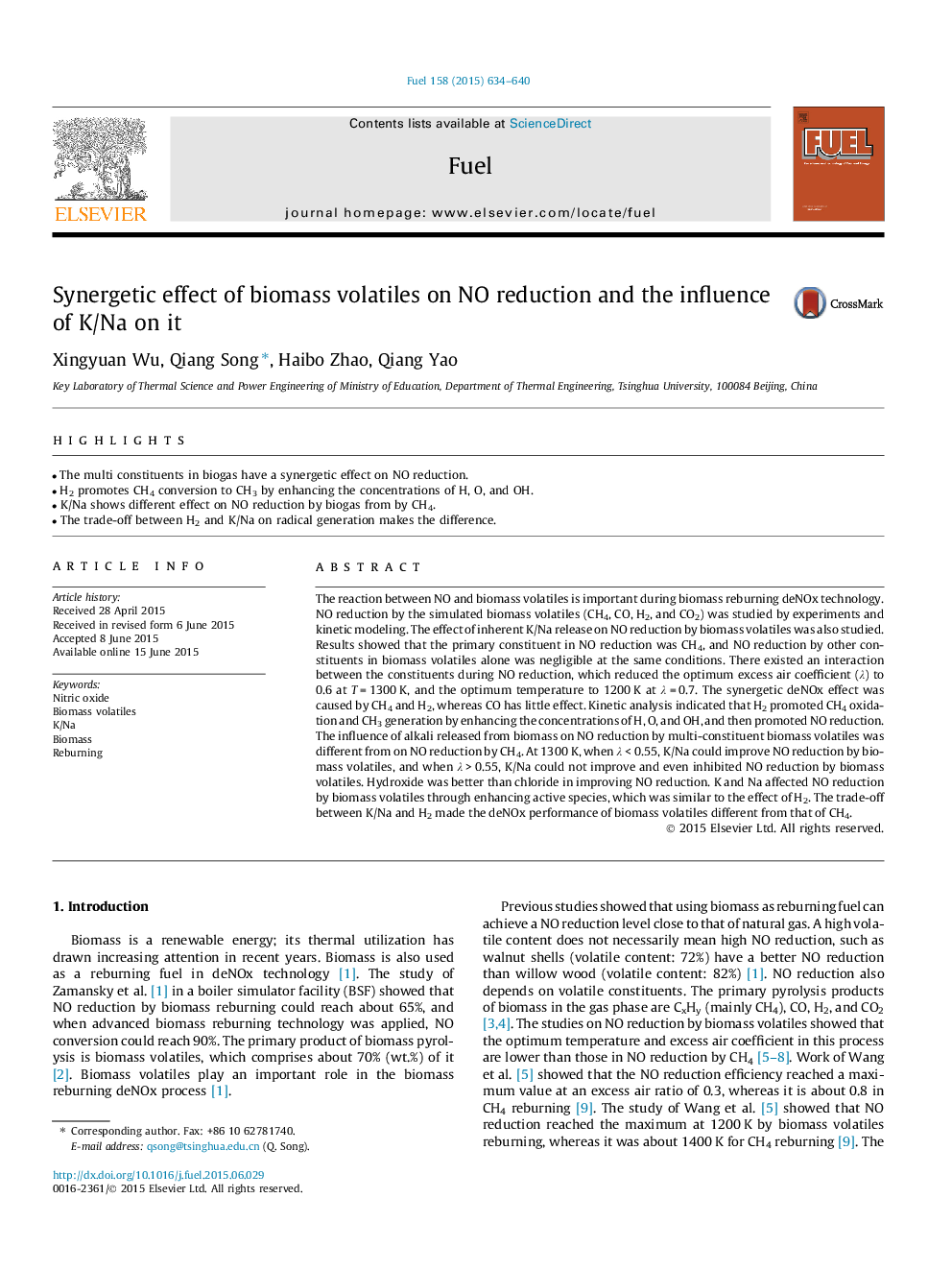| Article ID | Journal | Published Year | Pages | File Type |
|---|---|---|---|---|
| 6635074 | Fuel | 2015 | 7 Pages |
Abstract
The reaction between NO and biomass volatiles is important during biomass reburning deNOx technology. NO reduction by the simulated biomass volatiles (CH4, CO, H2, and CO2) was studied by experiments and kinetic modeling. The effect of inherent K/Na release on NO reduction by biomass volatiles was also studied. Results showed that the primary constituent in NO reduction was CH4, and NO reduction by other constituents in biomass volatiles alone was negligible at the same conditions. There existed an interaction between the constituents during NO reduction, which reduced the optimum excess air coefficient (λ) to 0.6 at T = 1300 K, and the optimum temperature to 1200 K at λ = 0.7. The synergetic deNOx effect was caused by CH4 and H2, whereas CO has little effect. Kinetic analysis indicated that H2 promoted CH4 oxidation and CH3 generation by enhancing the concentrations of H, O, and OH, and then promoted NO reduction. The influence of alkali released from biomass on NO reduction by multi-constituent biomass volatiles was different from on NO reduction by CH4. At 1300 K, when λ < 0.55, K/Na could improve NO reduction by biomass volatiles, and when λ > 0.55, K/Na could not improve and even inhibited NO reduction by biomass volatiles. Hydroxide was better than chloride in improving NO reduction. K and Na affected NO reduction by biomass volatiles through enhancing active species, which was similar to the effect of H2. The trade-off between K/Na and H2 made the deNOx performance of biomass volatiles different from that of CH4.
Keywords
Related Topics
Physical Sciences and Engineering
Chemical Engineering
Chemical Engineering (General)
Authors
Xingyuan Wu, Qiang Song, Haibo Zhao, Qiang Yao,
